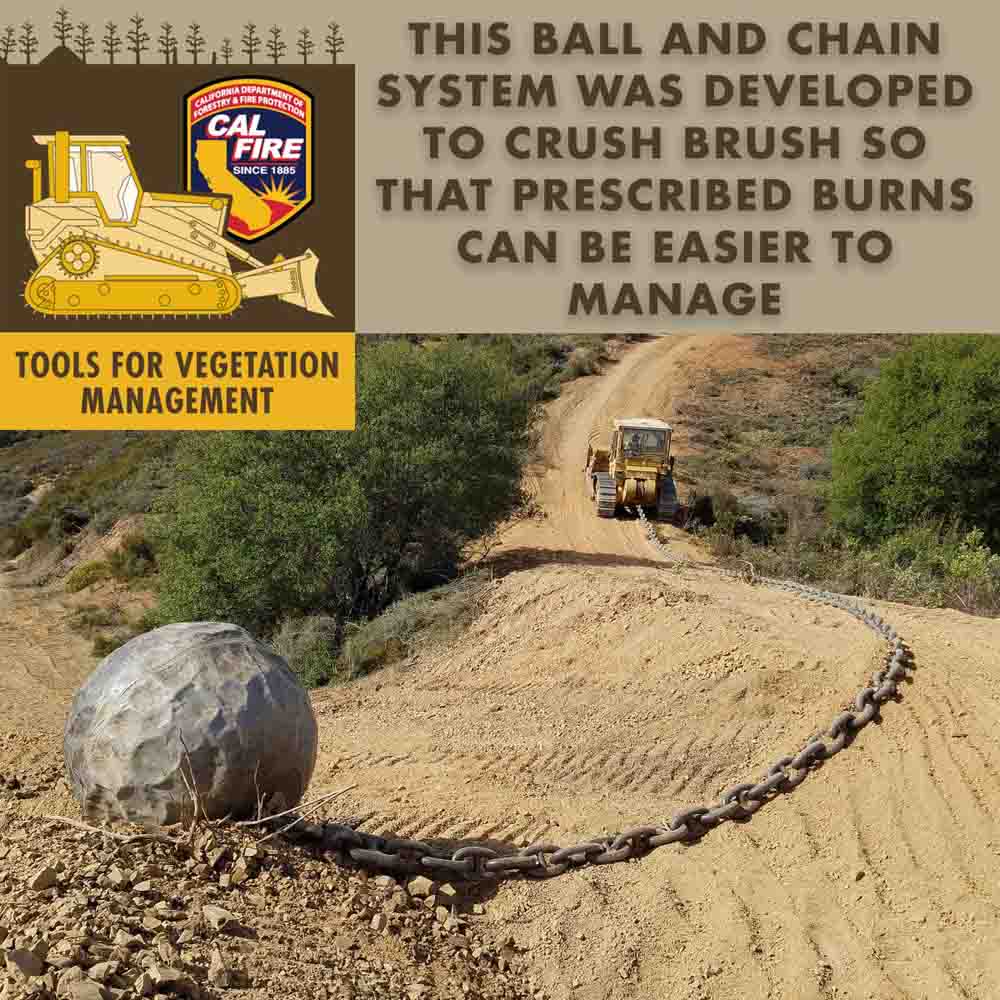This image posted on Twitter by the California Department of Forestry and Fire Protection, CAL FIRE, reminded me of when I was involved with a ball and chain operation one winter on the Sitton Peak project on the Cleveland National Forest in Southern California in the early 1970s.
The objective is to rip out or crush brush in order to reduce the wildfire hazard. It can be used to create a fuel break in lighter brush, or knock down heavier brush to make it easier and safer to conduct a prescribed fire.
When I was the contracting officer’s representative (COR) on the project a large dozer pulled about 100 to 200 feet of anchor chain that weighed 40 to 80 pounds per link. At the far end of the chain was a Navy surplus steel ball, a float, about five or six feet in diameter, that had been used with an anti-submarine net. The float was designed to support a net made of steel cable that was stretched across the mouth of a harbour or a strait for protection against submarines. A seven-mile long net was in place across the entrance to San Francisco Bay on December 7, 1941.


When the system was used on the Sitton Peak project we found that the ball needed to be heavier, so we filled it with water. That didn’t last long because the ball led a hard life, constantly being dragged across the ground and over rocks. The water leaked out through gouges in the steel. We later experimented with other materials inside the ball, including gravel, that were retained for a longer period of time.
Landscape architects liked the appearance of a chained fuel break better than those constructed by a dozer blade because it left some vegetation and a feathered edge — a more natural shape with fewer straight lines. As the dozer pulled the assembly, the chain encountered variable resistance and would temporarily get hung up on a rock or a heavy brush patch. If the dozer was driving along a ridge top, this would cause the ball to traverse up and down the slope, leaving a zig-zag or irregular edge.
When used on flat ground, the ball is positioned and then the dozer drives in circles around it.
With the brush crushed, close to the ground, and later dried out, it can then be treated with prescribed fire that burns less intensely than standing live brush in the summer.
A ball and chain is not exactly a light-hand-on-the-land system. There is serious soil and vegetation disturbance, so before considering the method, any sensitive plants, animals, and artifacts need to be carefully evaluated.
Back in 2009 I wrote about a misadventure that involved the dozer we used on the Sitton Peak project. It became seriously stuck in mud while “walking” back from the project on a dirt road. Four trucks that came to rescue the dozer also got stuck in the same area. It was one of those incidents where rescuers became victims. The article has photos I took of the FUBAR incident.







